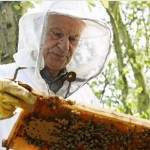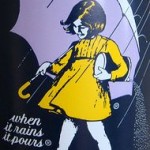 Most innovations we hear about these days involve some new technology, or some new application of an existing technology, but some of the most interesting and exciting innovations go in the opposite direction – seeing that something incredibly simple and low-tech is a better “how” to do something.
Most innovations we hear about these days involve some new technology, or some new application of an existing technology, but some of the most interesting and exciting innovations go in the opposite direction – seeing that something incredibly simple and low-tech is a better “how” to do something.
When it comes to testing and surveying for things, the use of animals is not new. Dolphins can be trained to look for mines, pigs are used to sniff out truffles, and we regularly see dogs at airports sniffing our luggage for drugs. I have been tempted to put some other smell on my luggage (like bacon) to get a reaction from the dog, but I don’t need that kind of attention, and then I am stuck with luggage that smells like bacon.
But a much more interesting king of testing has been devised. I read this article in the paper today about the use of bees at a German airport  to test air quality levels. It’s really simple, they simply collect the honey from the bees and test it for toxins like certain hydrocarbons and heavy metals. As we read about bees disappearing from our farmlands, this seems like a creative way to re-introduce them into some areas and not only re-grow the bee population, but also learn a lot about air quality.
to test air quality levels. It’s really simple, they simply collect the honey from the bees and test it for toxins like certain hydrocarbons and heavy metals. As we read about bees disappearing from our farmlands, this seems like a creative way to re-introduce them into some areas and not only re-grow the bee population, but also learn a lot about air quality.
Not only is that really smart and easy and cheap, it makes me think that there have to be lots of other creatures that we can use to “listen” to water and air quality. It’s well known that some creatures are immune to various toxins, while others absorb them. The use of honey from bees is great because you don’t have to kill anything and it’s highly repeatable. My bet is that you could find several species of fish and birds that capture toxins and whether you collect feathers or droppings or whatever, I bet we could learn a lot more about the health and wellness of our environments, first as a snapshot, but then even more valuable would be the trend data so when you see a spike or just a shift, you know when it happened which makes diagnosing the cause a lot easier.
Great rethinking. And I love that it’s so low tech. I try to keep a repository of low tech examples of rethinking, and while I will add this to  the group, my favorite is still why Morton Salt uses their trademark phrase “when it rains it pours” – the answer is magnesium carbonate, but the more interesting part is what problem it solved. Any guesses?
the group, my favorite is still why Morton Salt uses their trademark phrase “when it rains it pours” – the answer is magnesium carbonate, but the more interesting part is what problem it solved. Any guesses?
-Ric
Leave a Reply